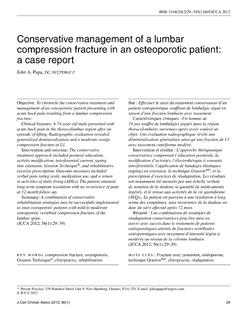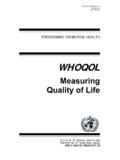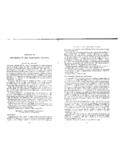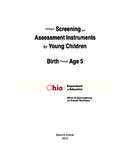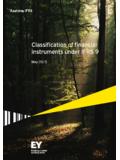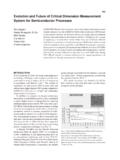Transcription of The efficacy of instrument assisted soft tissue ...
1 200 J Can Chiropr Assoc 2016; 60(3)ISSN 0008-3194 (p)/ISSN 1715-6181 (e)/2016/200 211/$ JCCA 2016 The efficacy of instrument assisted soft tissue mobilization: a systematic reviewScott W. Cheatham, PT, PhD, DPT, OCS, ATC, CSCS1 Matt Lee, PT, MPT, CSCS2 Matt Cain, MS, CSCS, USAW-I3 Russell Baker, DAT, ATC41 Division of Kinesiology, California State University Dominguez Hills2 Ohlone College3 Division of Kinesiology, California State University Dominguez Hills4 Department of Movement Sciences, University of IdahoCorresponding author: Scott W.
2 Cheatham California State University Dominguez Hills, 1000 E. Victoria Street, Carson, California 90747 Tel:(310) 892-4376 e-mail: JCCA 2016 Background: instrument assisted soft tissue mobilization (IASTM) is a popular treatment for myofascial restriction. IASTM uses specially designed instruments to provide a mobilizing effect to scar tissue and myofascial adhesions. Several IASTM tools and techniques are available such as the Graston technique. Currently, there are no systematic reviews that have specifically appraised the effects of IASTM as a treatment or to enhance joint range of motion (ROM).
3 Purpose: The purpose of this study was to systematically appraise the current evidence assessing the effects of IASTM as an intervention to treat a musculoskeletal pathology or to enhance joint ROM. Methods: A search of the literature was conducted during the month of December 2015 which included the following databases: PubMed, PEDro, Science Direct, and the EBSCO host collection. A direct search of known journals was also conducted to identify potential Contexte : La mobilisation des tissus mous assist e par instrument (MTMAI) est un traitement populaire pour la restriction des tissus myofasciaux.
4 La MTMAI utilise des instruments sp cialement con us pour fournir un effet de mobilisation sur les tissus cicatriciels et les adh rences myofasciales. Plusieurs outils et techniques de MTMAI sont disponibles, comme la technique GrastonMD. Actuellement, il n y a aucun examen syst matique ayant notamment valu les effets de la MTMAI comme traitement ou pour am liorer l amplitude articulaire. Objectif : Cette tude visait valuer syst matiquement les donn es actuelles valuant les effets de la MTMAI comme m thode d intervention pour traiter une pathologie musculo-squelettique ou pour am liorer l amplitude articulaire.
5 M thodologie : Une recherche des publications scientifiques a t r alis e au cours du mois de d cembre 2015, incluant les bases de donn es suivantes : PubMed, PEDro, Science Direct, et la collection EBSCO host. Une recherche directe a galement t r alis e dans les J Can Chiropr Assoc 2016; 60(3) 201SW Cheatham, M Lee, M Cain, R BakerIntroductionInstrument assisted soft tissue mobilization (IASTM) is a popular treatment for myofascial restriction based upon the rationale introduced by James ,2 Unlike the Cyriax approach utilizing digital cross friction, IASTM is applied using specially designed instruments to pro-vide a mobilizing effect to soft tissue ( , scar tissue , myofascial adhesion) to decrease pain and improve range of motion (ROM)
6 And The use of the instru-ment is thought to provide a mechanical advantage for the clinician by allowing deeper penetration and more specif-ic treatment, while also reducing imposed stress on the hands (Figure 1).2-4 Using instruments for soft tissue mo-publications. The search terms included individual or a combination of the following: instrument ; assisted ; augmented; soft- tissue ; mobilization; Graston ; and technique. Results: A total of 7 randomized controlled trials were appraised. Five of the studies measured an IASTM intervention versus a control or alternate intervention group for a musculoskeletal pathology.
7 The results of the studies were insignificant (p>.05) with both groups displaying equal outcomes. Two studies measured an IASTM intervention versus a control or alternate intervention group on the effects of joint ROM. The IASTM intervention produced significant (P<.05) short term gains up to 24 hours. Conclusion: The literature measuring the effects of IASTM is still emerging. The current research has indicated insignificant results which challenges the efficacy of IASTM as a treatment for common musculoskeletal pathology, which may be due to the methodological variability among studies.
8 There appears to be some evidence supporting its ability to increase short term joint ROM. (JCCA. 2016;60(3):200-211) key words: chiropractic, Graston ; myofascial; massagerevues connues pour relever les publications possibles. La recherche tait bas e sur les termes ou combinaisons de termes suivants : instrument ; assist e; accrue; tissu mou; mobilisation; GrastonMD; technique. R sultats : Au total, sept essais contr l s randomis s ont t valu s. Cinq des tudes mesuraient une intervention de MTMAI par rapport un groupe de contr le ou une intervention diff rente pour l valuation de la pathologie musculo-squelettique.
9 Les r sultats des tudes taient n gligeables (p > ,05) les deux groupes affichant des r sultats gaux. Deux tudes mesuraient une intervention de MTMAI par rapport un groupe de contr le ou une intervention diff rente sur les effets de l amplitude articulaire. L intervention de MTMAI a produit des gains court terme significatifs (P < ,05) allant jusqu 24 heures. Conclusion : Les publications scientifiques sur la mesure des effets de la MTMAI sont encore leur d but. La recherche actuelle a indiqu des r sultats n gligeables qui mettent en question l efficacit de la MTMAI comme traitement de la pathologie musculo-squelettique courante, ce qui peut tre d la variabilit de la m thodologie entre les tudes.
10 Il semble y avoir des preuves soutenant sa capacit augmenter l amplitude articulaire court terme. (JCCA. 2016;60(3):200-211) mots cl s : chiropratique, GrastonMD, myofascial, massageFigure 1. Example of IASTM J Can Chiropr Assoc 2016; 60(3)The efficacy of instrumented assisted soft tissue mobilization: a systematic reviewbilization is theorized to increase vibration sense by the clinician and patient. The increased perception of vibra-tion may facilitate the clinician s ability to detect altered tissue properties ( , identify tissue adhesions)

